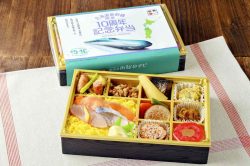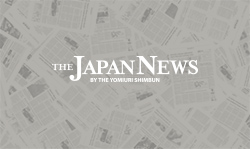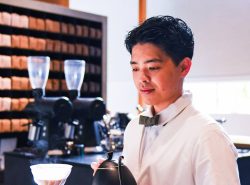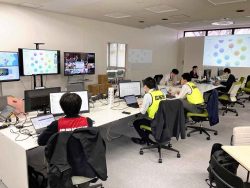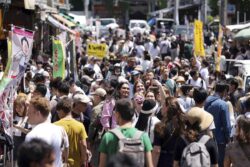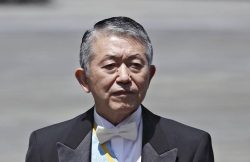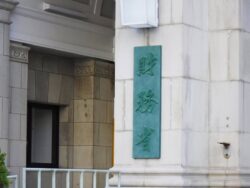Geigi Tradition Regains Glamor in Shizuoka Pref. Spa Town; Support Organization Helps Performers Recover from Pandemic Crisis
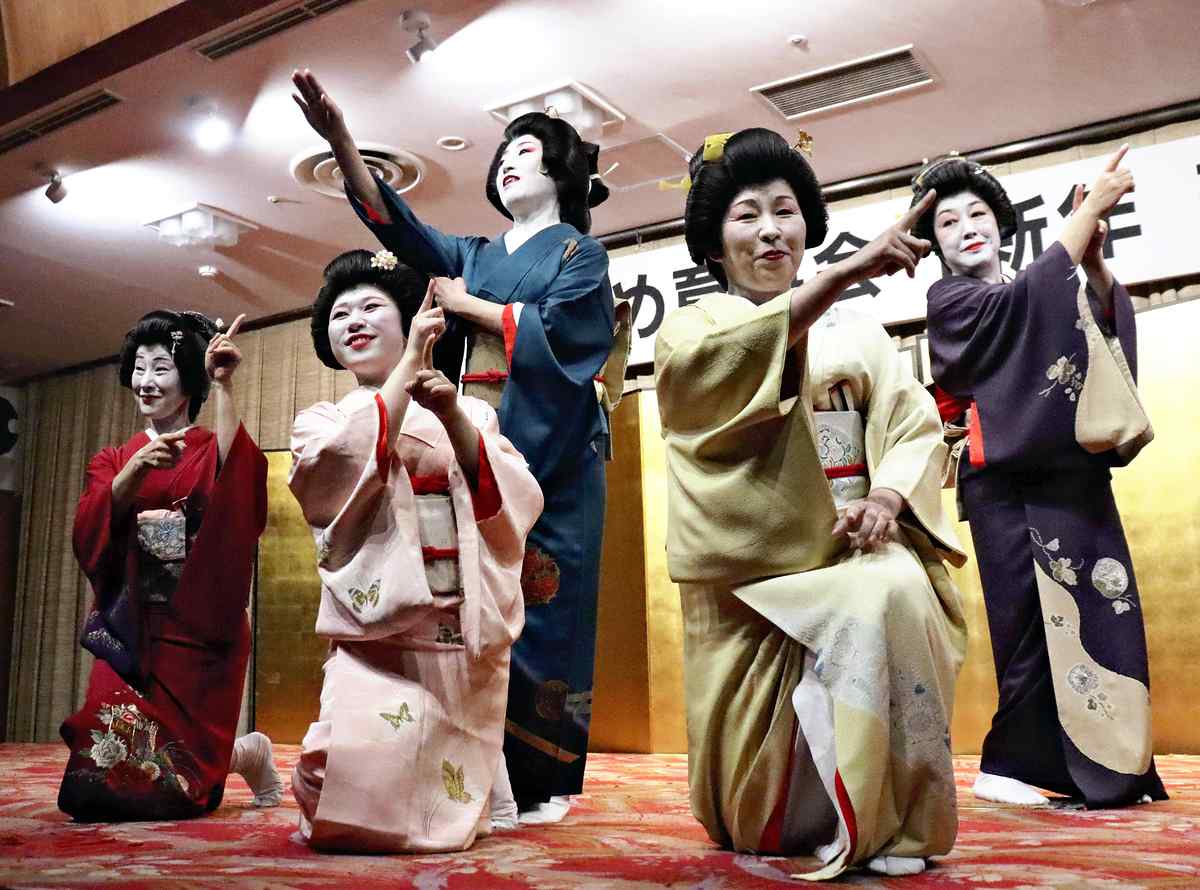
Geigi women dance at an ozashiki party.
17:23 JST, April 21, 2025
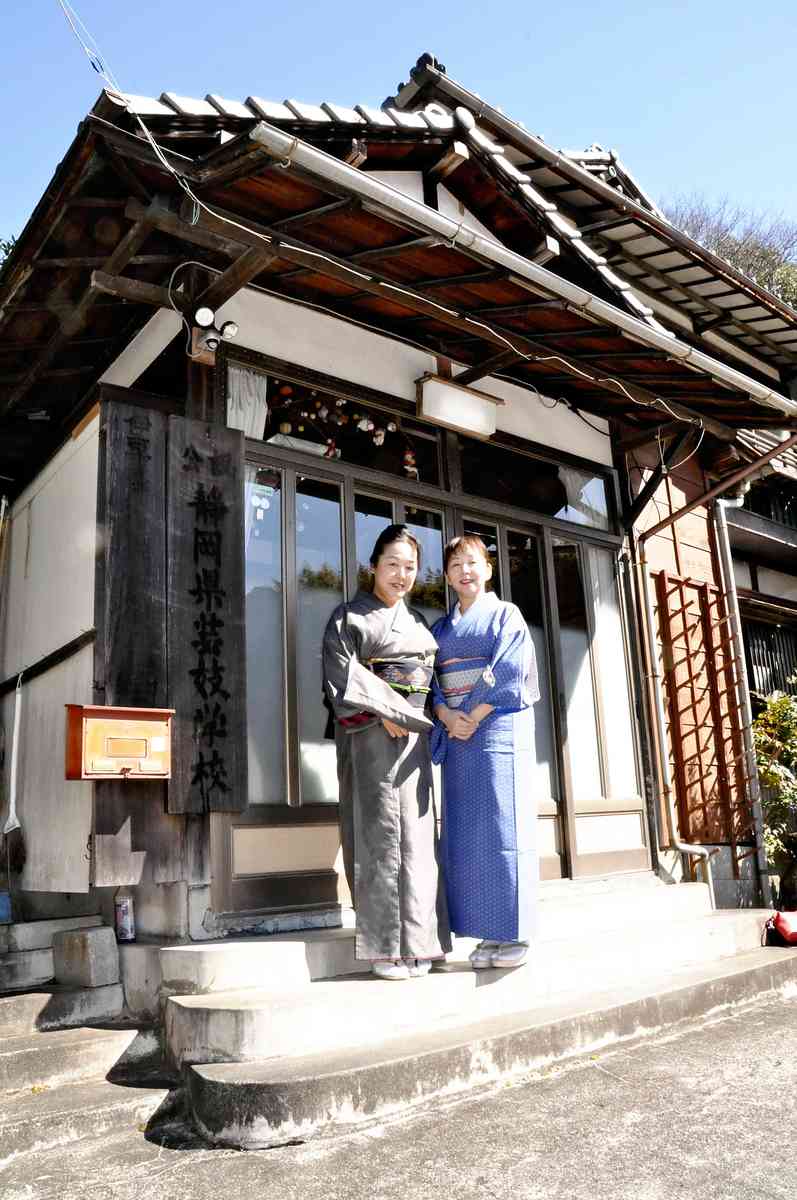
Kumi, right, stands with another geigi in front of Izunagaoka Kenban.
IZUNOKUNI, Shizuoka — As I walked down a narrow path on the edge of an onsen spa town in Izunokuni, Shizuoka Prefecture, the sound of a shamisen floated from an old two-story house. I could faintly hear Nagauta traditional chanting, too. I opened the house’s aged glass door and was greeted by a beaming woman in a kimono. “Irasshai,” (Welcome) she said. Her name was Kumi, and she was a geigi, another word for a geisha.
The Izunagaoka onsen hot spring resort area comprises two hot springs: Kona onsen, which is believed to have been used from about 1,300 years ago, and the adjacent Nagaoka onsen, which came into use toward the end of the Meiji era (1867-1912). According to the Izunokuni municipal government’s tourism and culture department, the city is home to 39 hotels and ryokan inns, which received about 600,000 guests in fiscal 2023.
Banquets and events in the spa town are livened up by geigi women, who all belong to Izunagaoka Kenban, a cooperative organization of geisha workers. It arranges the women’s party appearance schedules and provides them with a place to practice their art. It also once operated the only geigi school in Japan outside of Kyoto. The school’s nameboard still hangs in the cooperative’s entryway.
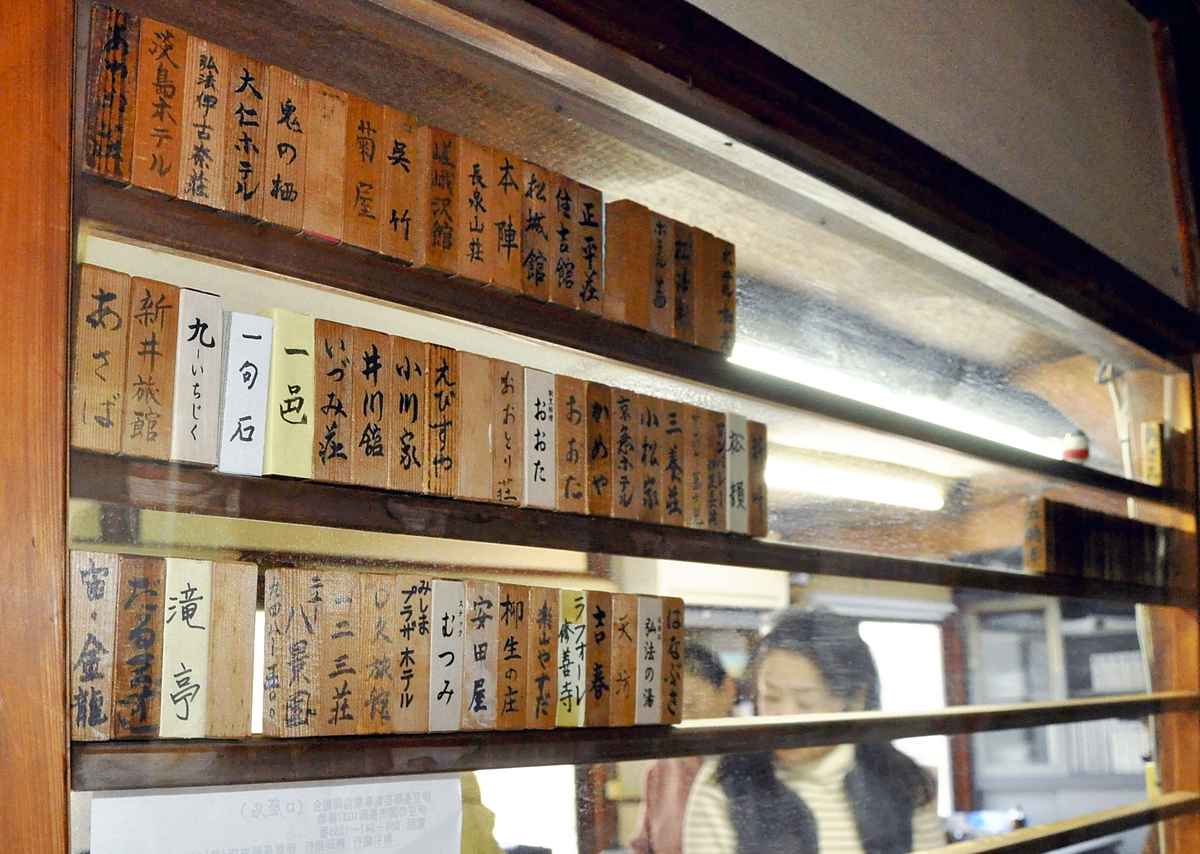
Wooden nameplates show the names of past and present geigi women and the ryokan inns where they have performed.
According to Kumi, who is also an executive of the cooperative, there were more than 400 geigi women active in the 1960s and 1970s. With changing times, such as the bursting of the bubble economy, they have retired one after another. But their name plates still remain in the rehearsal room at the cooperative, a reminder of the bustling good old days.
As the geigi grew older, their number dwindled, and they had fallen to just 10 in 2019. The COVID-19 pandemic further reduced the number of party opportunities, creating what Kumi described as an “existential threat.” But then, the flame of spa resort culture was rekindled by Ayame Ikueikai, a geigi support group founded in 2018. Local companies and individuals can become members of the group by paying annual dues of ¥50,000 per corporate member and ¥10,000 per individual member.
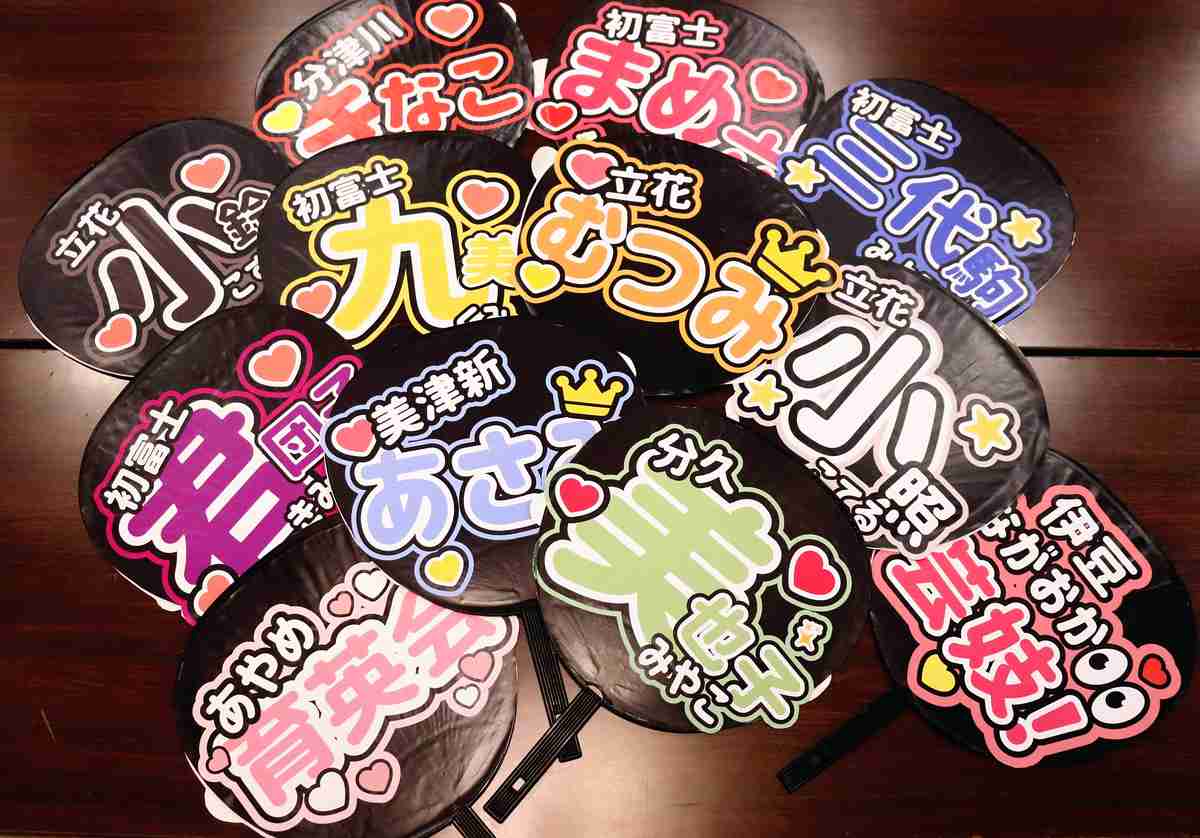
These uchiwa fans are used to show support for geigi at ozashiki parties.
Kumi is grateful to the group. “If it weren’t for those membership fees, we wouldn’t have been able to cover the costs to keep the cooperative running,” she said.
Thanks to the support from “danna-shu” (patrons), they managed to overcome the crisis without losing a single woman. In November last year, they resumed the stage performance “Izu Ayame-za,” which showcases their honed performing skills, for the first time in five years.
“Things are finally coming back to the pre-pandemic normal. This is going to be a make-or-break time for us,” Kumi said, with a smile of powerful determination.
Izunagaoka Kenban

Address: 1037 Nagaoka, Izunokuni, Shizuoka Prefecture
Access: Take the Izuhakone Railway to Izunagaoka Station. From there, ride a bus to the Onsen-Eki bus stop, then get off and walk for about seven minutes.
Note: Visitors can try on the type of kimono that geigi wear for ¥27,500.
Related Tags
"Features" POPULAR ARTICLE
-

Sanrio to Open Museum in Yamanashi Pref. Dedicated to Founder, Exhibits Include Hello Kitty, Other Characters
-

Legendary Sushi Chef Jiro Ono Turns 100: ‘I Have No Regrets’
-
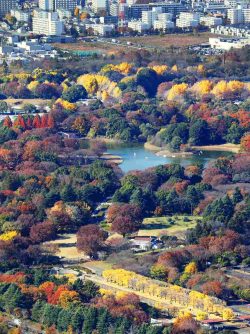
Autumn Foliage Surrounds Visitors to Tokyo’s Showa Kinen Park
-

My Daughter No Longer Speaks to Me, But I Want to See Her and My Grandchild
-

Kumamoto: Public Bath Refurbished as Library Where You Can Chat, Take Photos
JN ACCESS RANKING
-
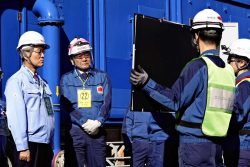
Keidanren Chairman Yoshinobu Tsutsui Visits Kashiwazaki-Kariwa Nuclear Power Plant; Inspects New Emergency Safety System
-
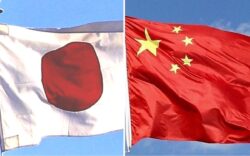
Imports of Rare Earths from China Facing Delays, May Be Caused by Deterioration of Japan-China Relations
-

University of Tokyo Professor Discusses Japanese Economic Security in Interview Ahead of Forum
-

Japan Pulls out of Vietnam Nuclear Project, Complicating Hanoi’s Power Plans
-
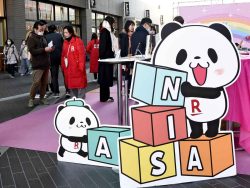
Govt Aims to Expand NISA Program Lineup, Abolish Age Restriction


